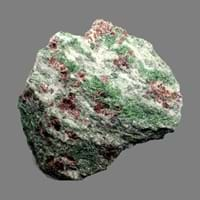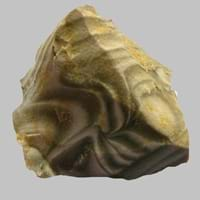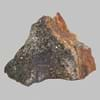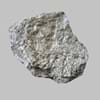Definition
Eclogite is an extreme metamorphic rock, formed by regional metamorphism of basalt rock under very high pressure and temperature
Flint is a hard type of sedimentary rock that produces a small piece of burning material when hit by steel
Discoverer
René Just Haüy
Unknown
Etymology
From French, Greek eklogē selection with reference to the selective content of the rock + -ite1
From Old English flint - a type of rock mainly known for high hardness and for giving off sparks when struck
Class
Metamorphic Rocks
Sedimentary Rocks
Sub-Class
Durable Rock, Medium Hardness Rock
Durable Rock, Hard Rock
Group
Not Applicable
Not Applicable
Other Categories
Fine Grained Rock, Opaque Rock
Fine Grained Rock, Opaque Rock
Texture
Earthy
Banded, Rough
Color
Black, Brown, Colourless, Green, Grey, Pink, White
Black, Brown, Green, Grey, Red, White
Durability
Durable
Durable
Scratch Resistant
Yes
Yes
Appearance
Dull, Banded and Foilated
Glassy or Pearly
Interior Uses
Decorative Aggregates, Interior Decoration
Decorative Aggregates, Homes, Interior Decoration
Exterior Uses
Paving Stone, Garden Decoration
As Building Stone, As Facing Stone, Garden Decoration, Office Buildings, Paving Stone
Other Architectural Uses
Curbing
Curbing
Construction Industry
Not Yet Used
Arrowheads, Cutting Tool, Spear Points
Medical Industry
In Chemical and Pharmaceutical Industry, Medicines and Cosmetics
Not Yet Used
Antiquity Uses
Artifacts
Artifacts
Commercial Uses
Creating Artwork, Gemstone
Creating Artwork, Gemstone, In fire-starting tools, Manufacture of tools, Metallurgical Flux, Jewelry, To ignite fire, Used in flintlock firearms
Types
Not Available
Not Available
Features
Available in Lots of Colors and Patterns, Generally rough to touch, Is one of the oldest rock
Clasts are smooth to touch, Easily splits into thin plates, Has High structural resistance against erosion and climate
Archaeological Significance
Monuments
Not Yet Used
Not Yet Used
Famous Monuments
Not Applicable
Not Applicable
Sculpture
Not Yet Used
Not Yet Used
Famous Sculptures
Not Applicable
Not Applicable
Pictographs
Used
Not Used
Petroglyphs
Used
Not Used
Figurines
Not Yet Used
Not Yet Used
Formation
Eclogite forms from high-pressure metamorphism of mafic igneous rocks mainly, basalt or gabbro as it plunges into the mantle in a subduction zone.
Flint is formed by the decomposition and compaction of various organisms such as sponges and diatoms under the water.
Mineral Content
Amphibole, Coesite, Corundum, Dolomite, Garnet, Kyanite, Lawsonite, Paragonite, Phengite, Pyroxene, Quartz, Rutile, Zoisite
Silicon
Compound Content
Aluminium Oxide, NaCl, CaO, Carbon Dioxide, Iron(III) Oxide, Magnesium Carbonate, MgO, Sodium Oxide, Potassium, Sodium
Silicon Dioxide
Types of Metamorphism
Not Applicable
Not Applicable
Types of Weathering
Mechanical Weathering
Not Applicable
Types of Erosion
Chemical Erosion, Sea Erosion
Chemical Erosion, Coastal Erosion, Water Erosion
Grain Size
Fine Grained
Very fine-grained
Fracture
Not Available
Conchoidal
Porosity
Less Porous
Highly Porous
Luster
Subvitreous to Dull
Vitreous
Compressive Strength
Not Available
Cleavage
Perfect
Non-Existent
Toughness
Not Available
1.5
Specific Gravity
2.86-2.87
2.5-2.8
Transparency
Opaque
Translucent to Opaque
Density
3.2-3.6 g/cm3
2.7-2.71 g/cm3
Specific Heat Capacity
Not Available
Resistance
Heat Resistant
Heat Resistant, Impact Resistant, Pressure Resistant, Wear Resistant
Deposits in Eastern Continents
Asia
India, Kazakhstan, Kuwait, Russia, South Korea, Thailand, Turkey
Azerbaijan, China, Russia
Africa
Ethiopia, Morocco, South Africa
Not Yet Found
Europe
France, Germany, Italy, Norway, Scotland
Austria, Belgium, Cyprus, Denmark, France, Germany, Italy, Malta, Netherlands, Poland, Portugal, Romania, Spain, Sweden, Switzerland, Turkey, Ukraine, United Kingdom
Others
Greenland
Not Yet Found
Deposits in Western Continents
North America
Canada, Costa Rica, Panama, USA
USA
South America
Argentina, Brazil, Colombia, Ecuador
Bolivia
Deposits in Oceania Continent
Australia
Central Australia, New Zealand, Queensland
New Zealand, South Australia
All about Eclogite and Flint Properties
Know all about Eclogite and Flint properties here. All properties of rocks are important as they define the type of rock and its application. Eclogite belongs to Metamorphic Rocks while Flint belongs to Sedimentary Rocks.Texture of Eclogite is Earthy whereas that of Flint is Banded, Rough. Eclogite appears Dull, Banded and Foilated and Flint appears Glassy or Pearly. The luster of Eclogite is subvitreous to dull while that of Flint is vitreous. Eclogite is available in black, brown, colourless, green, grey, pink, white colors whereas Flint is available in black, brown, green, grey, red, white colors. The commercial uses of Eclogite are creating artwork, gemstone and that of Flint are creating artwork, gemstone, in fire-starting tools, manufacture of tools, metallurgical flux, jewelry, to ignite fire, used in flintlock firearms.










